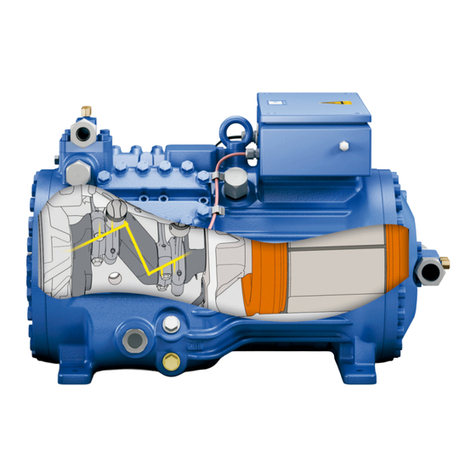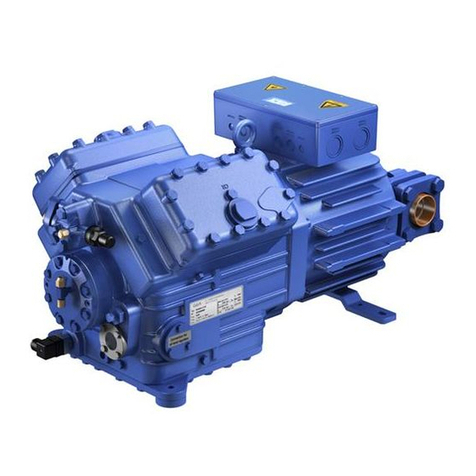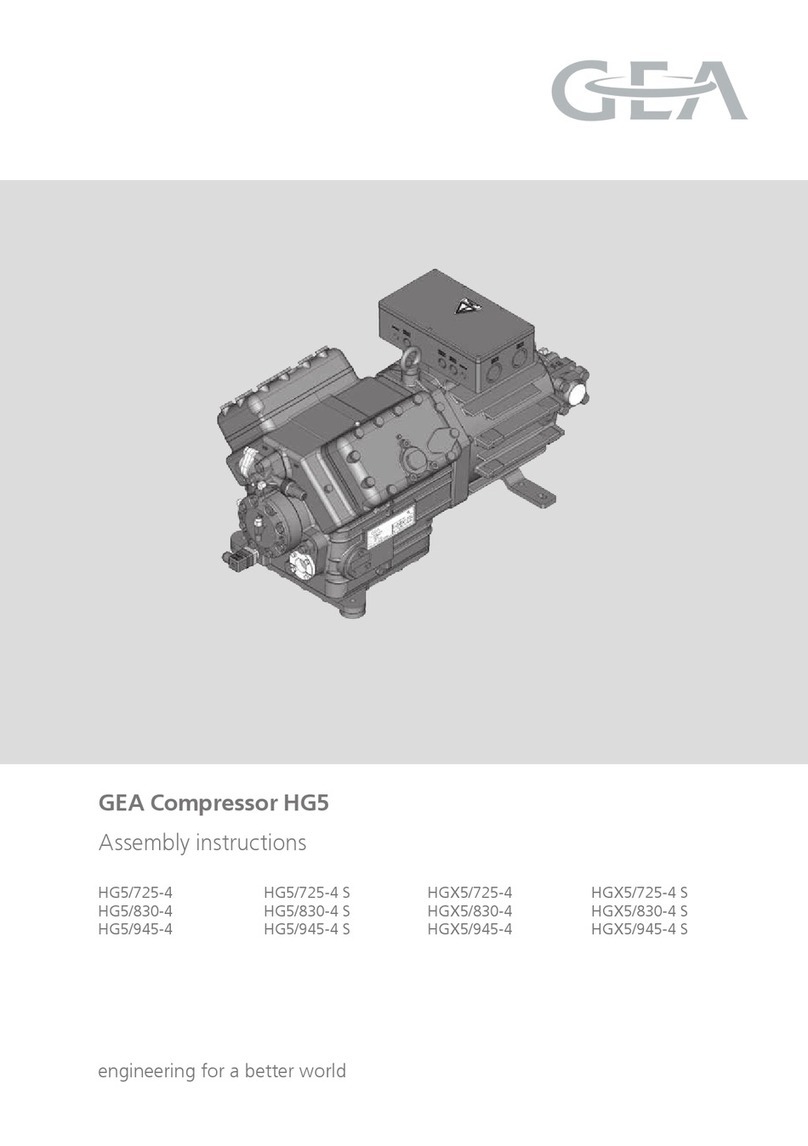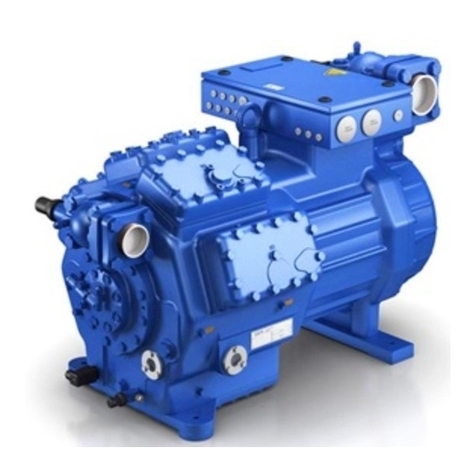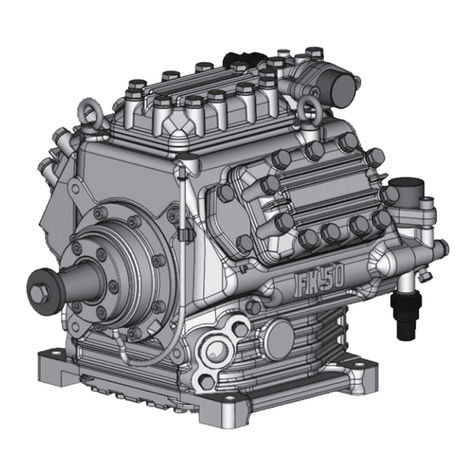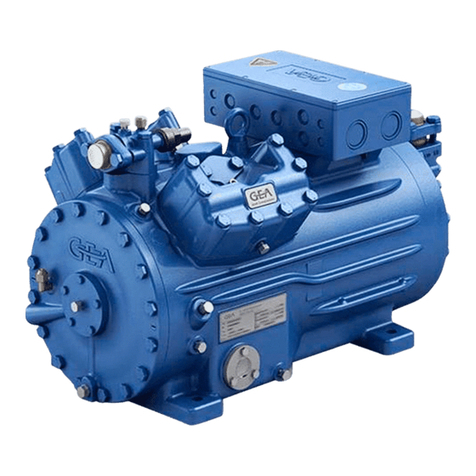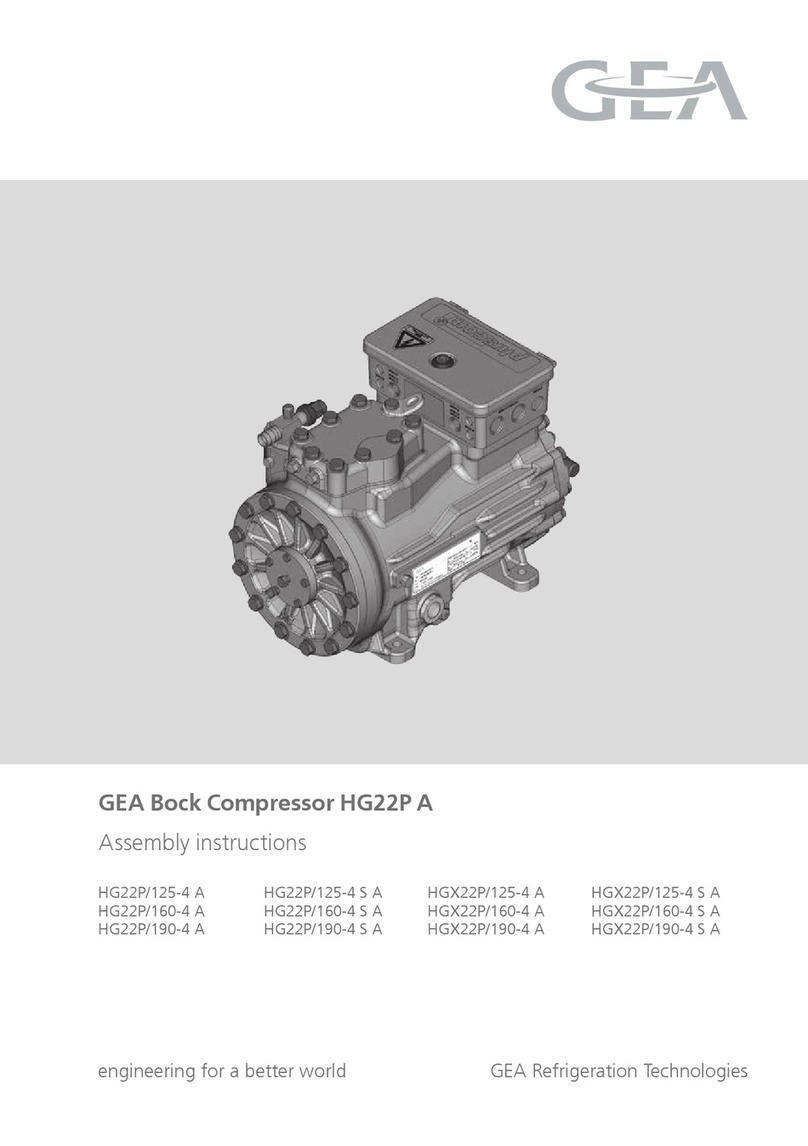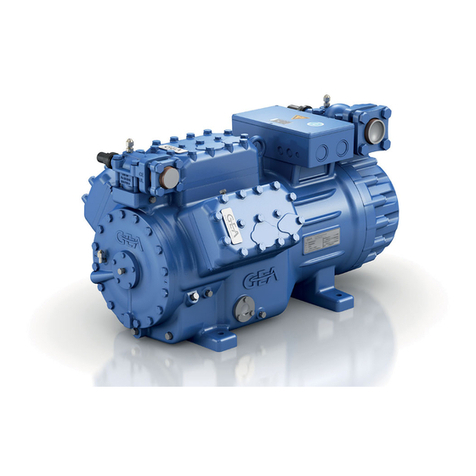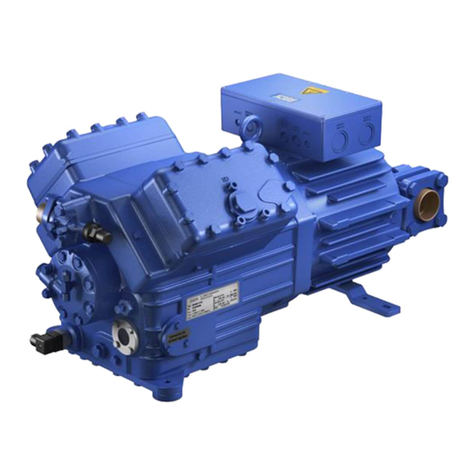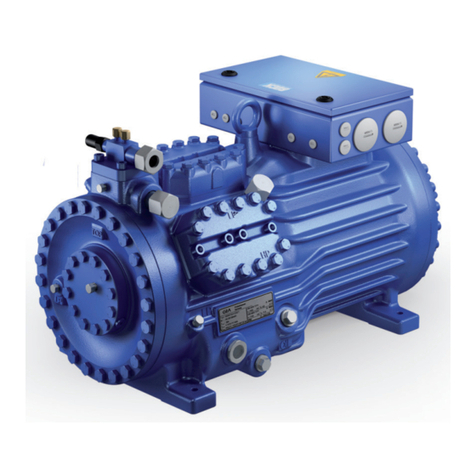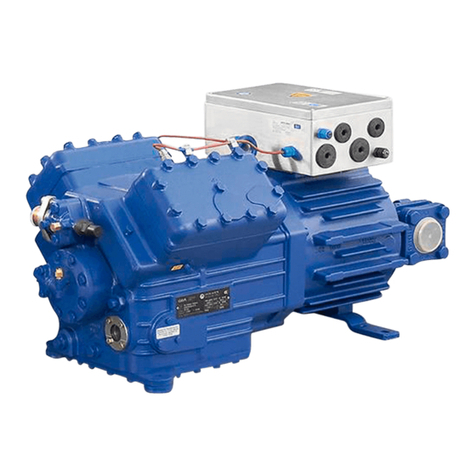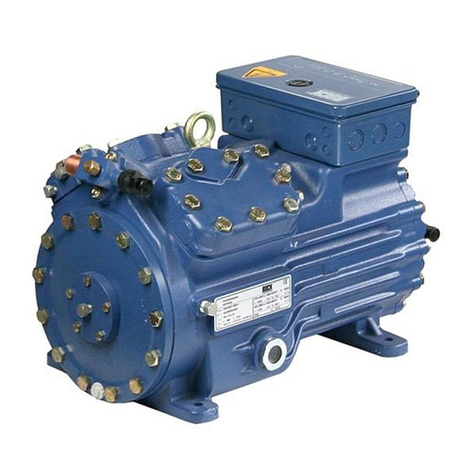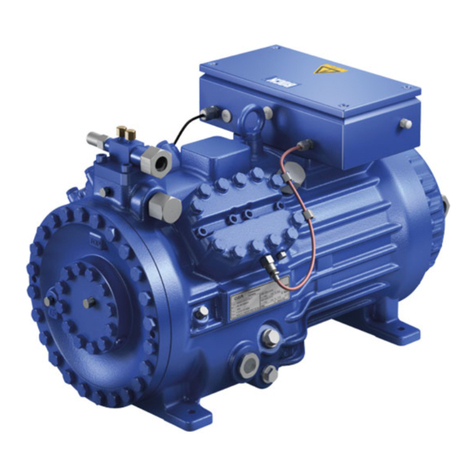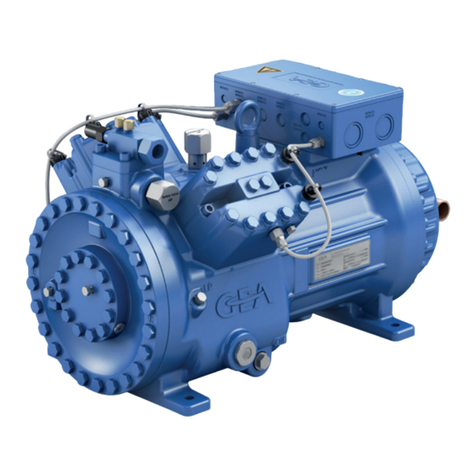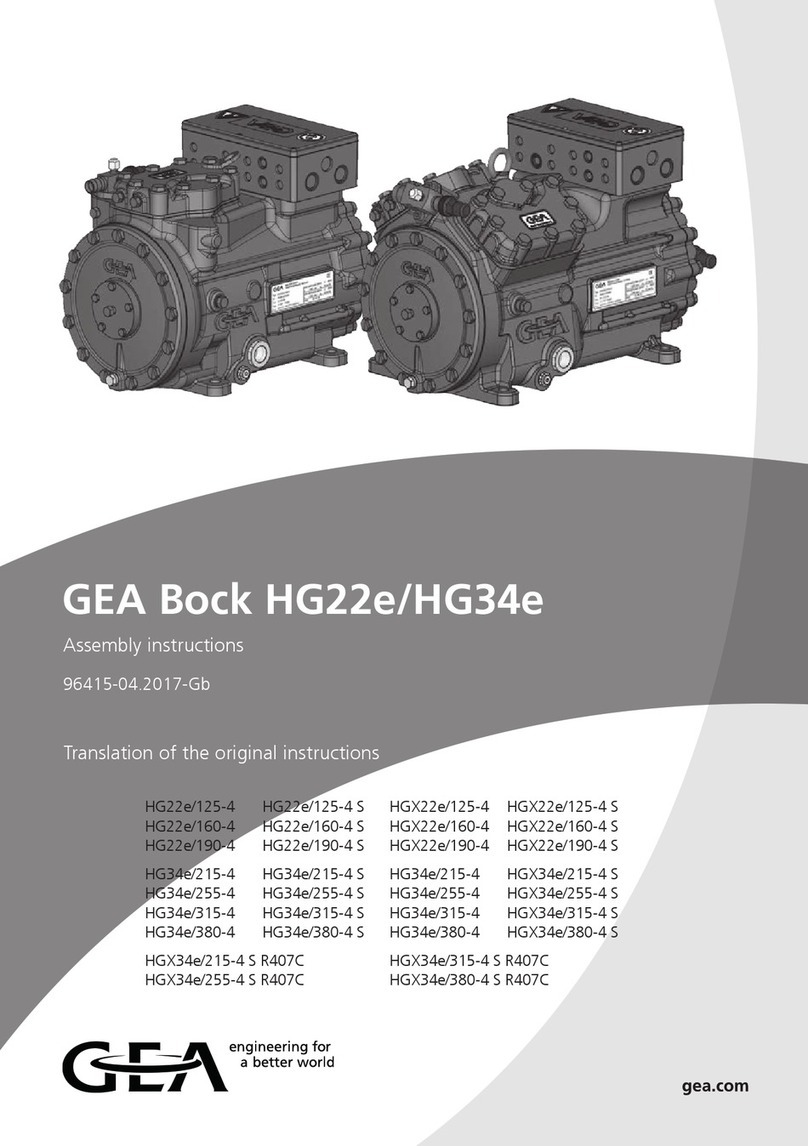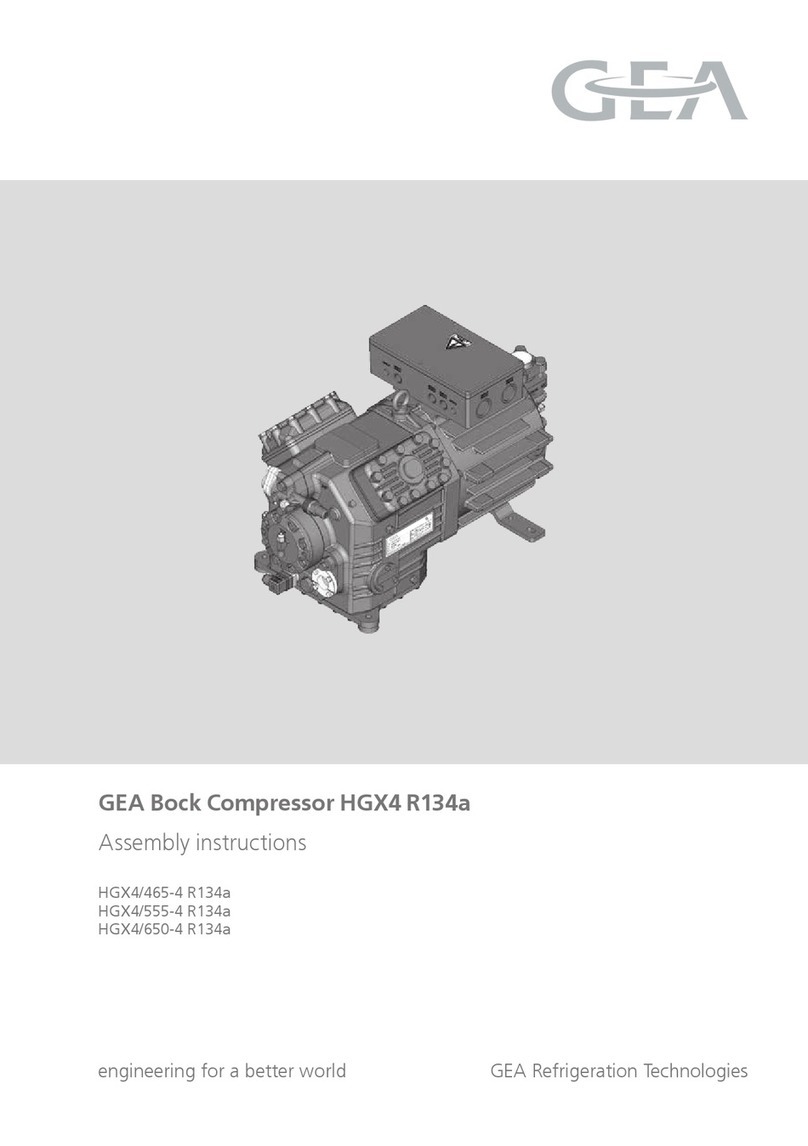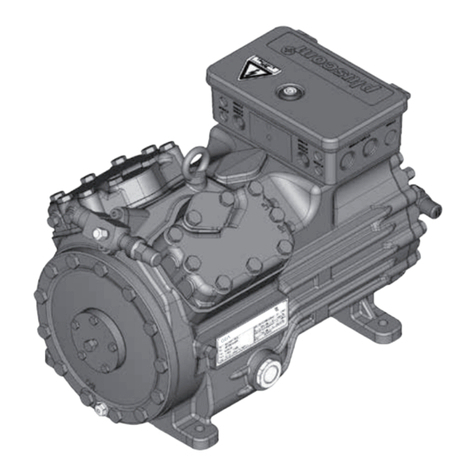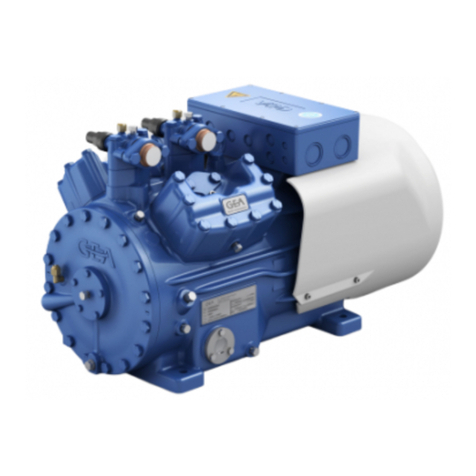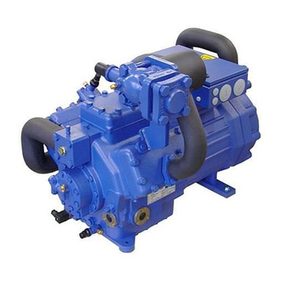1|Safety
These assembly instructions describe the standard version of the compressor named in the title
and NH3 manufactured by Bock. The Bock refrigerating compressor are intended for installation in
a machine (within the EU according to the EU Directives 2006/42/EC Machinery Directive, 97/23/EC
Pressure Equipment Directive).
Commissioning is permissible only if the compressor has been installed in accordance with these as-
sembly instructions and the entire system into which it is integrated has been inspected and approved
in accordance with legal regulations.
Only the refrigerant specied in these instructions may be used.
Any other use of the compressor is prohibited!
1.5 Intended use
WARNING! The compressor may not be used in potentially explosive
environments!
1.4 Additional safety instructions NH3
NH3ATTENTION! • High toxicity, intense odour (MAK 50 ppm)
• Explosive between 15 and 30 vol. % in the air. Due to the high
ignition energy and temperature, the risk of explosion, however,
is rated as low. So there are no special explosion protection
measures are required.
• However, the national safety regulations, accident prevention
regulations, technical regulations as well as specific regulations
(EN 378 etc.) must be observed.
• NH3steam is lighter than air and therefore disperses upwards.
• All key directives are summarised in the area for the AiF research
project 9404B "Safety of ammonia refrigeration systems".
• NH3corrodes copper materials and non-ferrous metals and is
incompatible with a number of plastics.
• Proof of personnel's specific expertise for installation,
commissioning, operation and service.
1.3 General safety instructions
DANGER! • Refrigerating compressors are pressurised machines and as such
call for heightened caution and care in handling.
The maximum permissible overpressure must not be exceeded,
even for testing purposes.
WARNING! • Risk of burns! Depending on the operating conditions, surface
temperatures of over 60°C on the discharge side or below 0°C on
the suction side can be reached.
